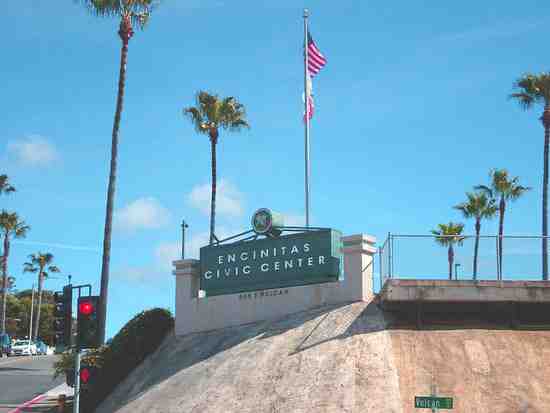Encinitas said yes to 199 homes on Clark Street
Neighbors lose on demand that street be upgraded
The 15 buildings, spanning six acres, include 159 market-rate and 40 low-income units.
The Encinitas City Council approved 4-0 a high-density housing project in Leucadia that will include low-income rental units, overturning a denial.
Spurred on by angry neighbors, the city’s planning commission in August denied permits for a 199-unit apartment complex on Clark Avenue, citing traffic impacts, a subdivision problem and insufficient access to the area’s many Spanish-speaking residents.
There are only 14-15 houses on Union Street, one of the roads that will feel the most pain from the addition of so many new homes. Those who live there see the traffic causing a sea change in the neighborhood.
Two appeals were filed, one by the developer, Western National Properties, which argued that it was truly 20 percent low-income, by right, because they did not use the state’s density bonus law to build more than the base zoning allowed.
That law allows developers to build more homes on a lot than the city allows, if some of them are for low-income people. At least 195 units are slated for the site in the city’s Housing Element update, in an area slated for high density.
“We could have proposed up to 299 units and used a significant number of parking reductions to accommodate that,” attorney Marco Gonzalez said.
The 15 buildings within the project, which will span six acres, include 159 market-rate and 40 low-income units.
Another recent housing project that earmarked 41 of 277 units for low-income residents was denied last November — prompting the attorney general to warn the city that the denial violated state law.
The city approved the project, known as Encinitas Boulevard Apartments, in June of this summer.
In case the city’s long history of fighting new affordable housing developments was to continue when they filed appeals last week, a letter from YIMBY Law, a nonprofit that sues cities when they fail to comply with state housing laws, warned the council .
“If the city does not follow the law, YIMBY Law will not hesitate to file a lawsuit to ensure that the law is enforced.”
Like the Encinitas Boulevard project, the Clark apartments rely on lot consolidation, which the planning commission opposed as “subdivision,” requiring the developer to complete an environmental impact report.
Gonzalez said that’s not the case because only four lots are being consolidated, not six; number that would require a division map.
As for the expansion, Encinitas does not have a Spanish-speaking area requirement in its code, and the developer has already agreed to support interpretation services at city meetings, he added.
The second complaint was filed by the Clark Development Action Group, which fights “irresponsible high-density development” in Encinitas.
They objected to the commission’s denial because it did not go far enough.
The main complaint was the lack of street landscaping, which neighbors felt should precede any new housing.
Opponents say 15 high-density developments are proposed in Encinitas without adding infrastructure or roads.
Entry and exit routes for the 199-unit Clark project will create hazards for pedestrians and motorists, they said.
A traffic study by the developer found there would be no serious impacts from the projected increase of 1,200 vehicle trips per day — but the group’s attorney, Craig Sherman, argued the road’s capacity is a rural road, not a residential collector, as the city has classified it.
According to Gonazales, the traffic study showed that service levels will be acceptable. The impact of Covid on traffic is “absolutely taken into account” in their figures.
The most important thing, he said, is that Clark Avenue and Union Street are roads with non-circulation elements, and the city lacks legal standards for the design of these roads, or capacity standards.
If traffic calming or a stop sign is needed when the project is developed, he said he will pay for those types of improvements.
“But without objective design standards, there’s simply no evidence on which we can be burdened with improving that entire street,” he told the Union.
“If you want to deny or reduce the density of a project, you have to have specific objective negative impacts on public health and safety and there is no feasible way to mitigate them.”
Opponents of the project failed to identify any, he said. Community character and things like obstruction of view don’t count, because the courts have decided they aren’t objective.
“They have nothing to hang their hat on except the hope that you will buy into their argument about subdivision . . .”


